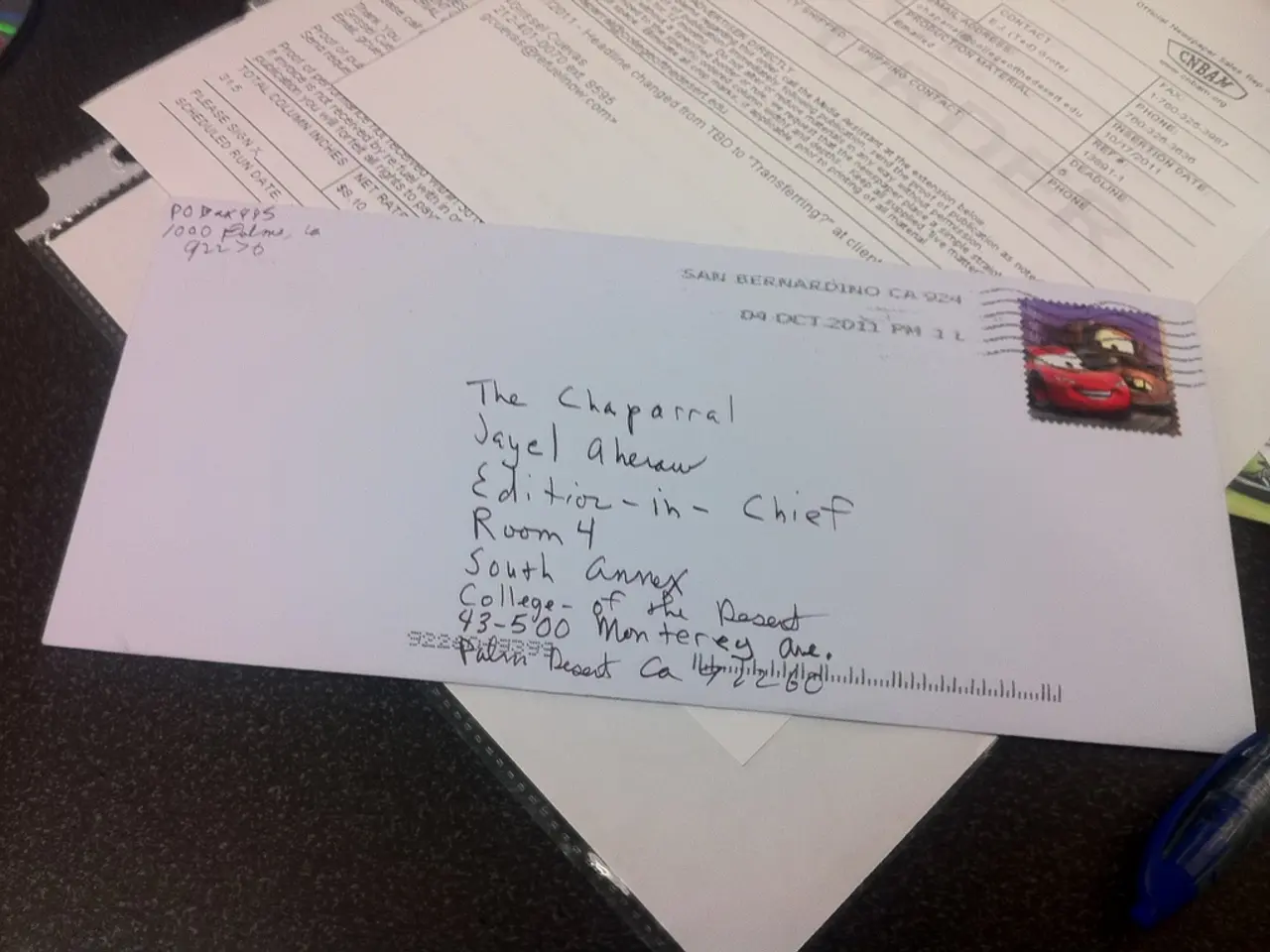U.S. Air Force Establishes New Position as Deputy Chief for Cyber and Communications
The United States Air Force has undergone a significant reorganization, creating a separate deputy chief of staff role focused on warfighter communications and cyber systems (AF/A6). This move, unveiled at a ceremony on July 23 at the Pentagon, marks one of the largest restructurings of the Air Staff in over 30 years.
The new AF/A6 office, led by Maj. Gen. Michele C. Edmondson, is tasked with ensuring that communications and cyber systems are available, secure, and aligned with warfighter priorities in contested environments. This change aims to improve readiness, resilience, and operational effectiveness.
The Air Force's decision to separate the intelligence and command, control, communications, and cyber directorates is part of a broader effort to elevate cyber warfare within the service. This move aligns directly with the Department of Defense’s broader initiative known as Combined Joint All-Domain Command and Control (CJADC2). CJADC2 focuses on integrating and advancing command and control capabilities across all domains—air, land, sea, space, and cyber—to maintain decision superiority in complex battlespaces.
Maj. Gen. Edmondson, previously a senior adviser to the Air Force undersecretary, will lead the AF/A6 office in its mission to provide enterprise-level advocacy for warfighter communications and cyber requirements, architecture, and funding. This ensures the Air Force’s communications networks are more resilient, interoperable, and aligned with joint force operational needs.
The AF/A6 office's creation follows the Air Force's split of its A2 office (managing intelligence, surveillance, and reconnaissance) and A6 office (handling cyber warfare) into separate entities. Lt. Gen. Leah G. Lauderback, the most recent official to hold the combined title, described the change as a "necessary step to treat communications and cyber as the operational enablers they are."
The Air Force also plans to elevate Air Forces Cyber out of 16th Air Force to become a separate component, but this move is still pending. Additionally, Brig. Gen. Max E. Pearson has been nominated to jump a grade to lieutenant general to take the deputy chief of staff for intelligence position.
The Air & Space Forces Association, an organization that honors and supports Airmen, Guardians, and their families, brings audio for this article. To learn more about their work, visit afa.org.
This restructuring reflects a recognition that modern warfare relies heavily on secure, rapid, and reliable communications and cyber capabilities, making the AF/A6 a key enabler for future military effectiveness. The Air Force's move to separate the intelligence and command, control, communications, and cyber directorates is a necessary step to ensure that communications and cyber capabilities are available, secure, and aligned with warfighter priorities.
[1] Department of the Air Force. (2022). Air Force Releases Organizational Changes to Support JADC2. [online] Available at: https://www.af.mil/News/Article-Display/Article/2881169/air-force-releases-organizational-changes-to-support-jadc2/
[2] Department of the Air Force. (2022). Maj. Gen. Michele C. Edmondson Named Deputy Chief of Staff for Warfighter Communications and Cyber Systems. [online] Available at: https://www.af.mil/News/Article-Display/Article/2881156/maj-gen-michele-c-edmondson-named-deputy-chief-of-staff-for-warfighter-communications-a/
[3] Department of the Air Force. (2022). Deputy Chief of Staff for Intelligence Nomination. [online] Available at: https://www.af.mil/News/Article-Display/Article/2881154/deputy-chief-of-staff-for-intelligence-nomination/
- The Air Force's decision to create a separate deputy chief of staff role for warfighter communications and cyber systems (AF/A6) is part of a broader effort to enhance cyber warfare within the service, aligning with the Department of Defense's Combined Joint All-Domain Command and Control (CJADC2) initiative.
- With the creation of the AF/A6, the Air Force aims to ensure that communications and cyber systems are available, secure, and aligned with warfighter priorities in contested environments, which is crucial for modern warfare relying heavily on secure, rapid, and reliable communications and cyber capabilities.
- The Air Force plans to elevate Air Forces Cyber out of 16th Air Force to become a separate component, further reflecting the service's commitment to treating communications and cyber capabilities as vital operation enablers.




